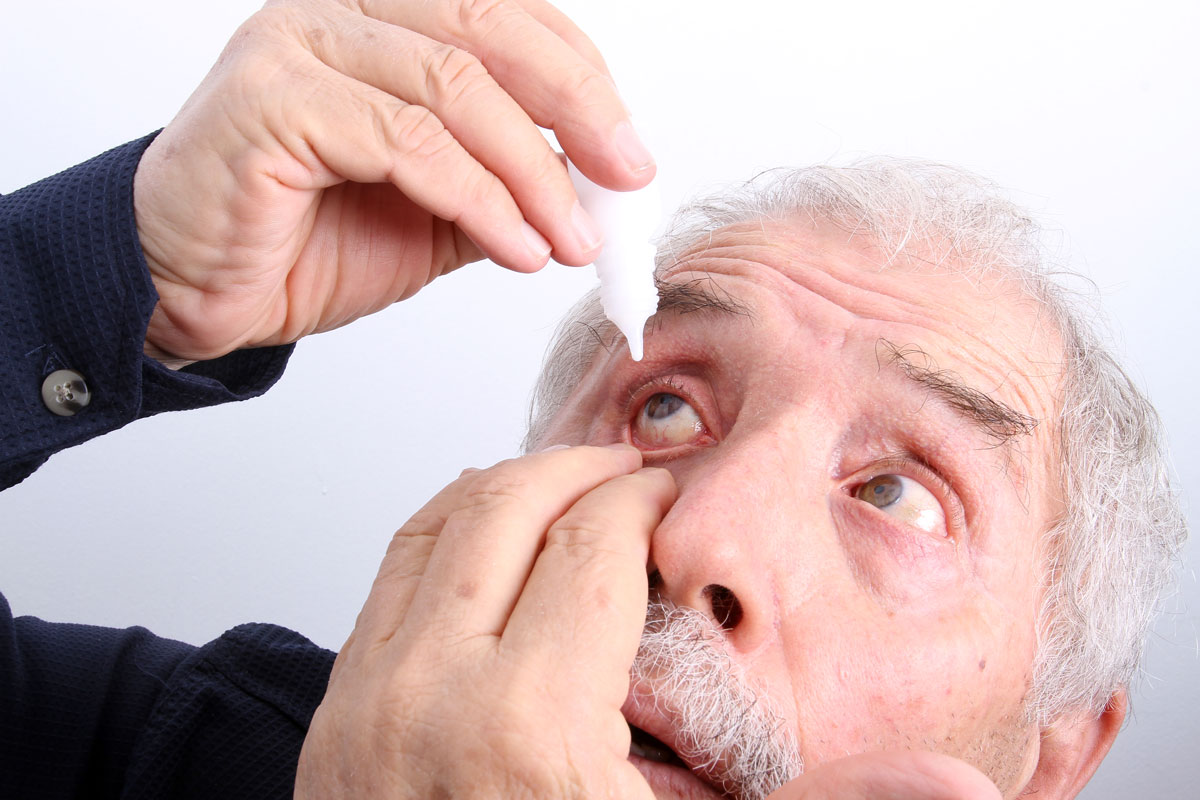 |
Taking time to educate glaucoma patients on the disease improves the chances that they will use their medication as prescribed. Photo: Getty Images. |
Research estimates that glaucoma patients properly adhere to their eye care provider-recommended medication regime only about 20% of the time. Though multiple drugs to treat glaucoma have proven effective, nonadherence to the correct dosing/administration guidelines may result in a less-than-optimal outcome. So, why are glaucoma patients not taking their medication as prescribed, despite clinical evidence that demonstrates the effectiveness of doing so?
A research team recently looked into the possible reasons why difficulty with medication adherence is so common among this patient population. They questioned a group of glaucoma patients on their topical medication use and found that overall, patient education seemed to be the biggest factor influencing medication adherence.
Each of the 55 participants with glaucoma completed the following surveys: Glaucoma Treatment and Compliance Assessment Tool, Beliefs about Medicines Questionnaire, Adherence to Refills and Medication Scale, Glaucoma Medication Adherence Self-Efficacy Scale and Short Test of Functional Health Literacy in Adults. Fifteen patients also completed an in-person interview where they were each asked in further depth about adherence habits and influences.
After combing through the electronic survey results, the team came up with the top four most common influential factors related to self-reported medication adherence: self-efficacy, forgetfulness, fear of side effects and dosing ability. They also noted that many patients lacked a solid understanding of the disease, despite some having had glaucoma for many years (the mean age of participants was 66).
The in-person interviews revealed three overarching themes that related to glaucoma treatment: (1) glaucoma management as a shared responsibility, (2) the importance of patient education and (3) specific adherence facilitators and barriers.
“Forgetfulness and running out of medication were the leading reasons reported that impact nonadherence,” the researchers wrote. “Approximately half of patients disagreed that their eye drops are reasonably priced (49%). Almost a third of patients at least agreed that they sometimes fall asleep before dosing time (31%). The same proportion indicated the drops aren’t with them at dosing time, and 38.2% of patients agreed that they use reminders as a means to remember to take their eye drops. Importantly, 16.4% of patients reported suffering from side effects, and over a third of patients agreed that the eye drops cause pain or discomfort (34.5%).”
Many patients responded “uncertain” when asked about the following: whether glaucoma can be caused by genetic factors (44%), occur with normal eye pressure (49%), be caused by diabetes (42%) or result from an eye injury (36%). Though many showed a basic understanding of the disease and its risk factors, they simultaneously lacked knowledge on the causes, physiology and implications of the disease, and many reported a desire to learn more.
“We found that patients’ self-confidence in their ability to administer and adhere to their medications was associated with significantly higher self-reported adherence levels,” the researchers concluded. “These findings highlight the significant role patients’ individualized beliefs and attitudes may have on longitudinal medication use, suggesting the need for providers to engage their patients in active discussion about their views on topical therapy.”
Gatwood J, Brooks C, Meacham R, et al. Facilitators and barriers to glaucoma medication adherence. J Glaucoma. November 12, 2021. [Epub ahead of print]. |

